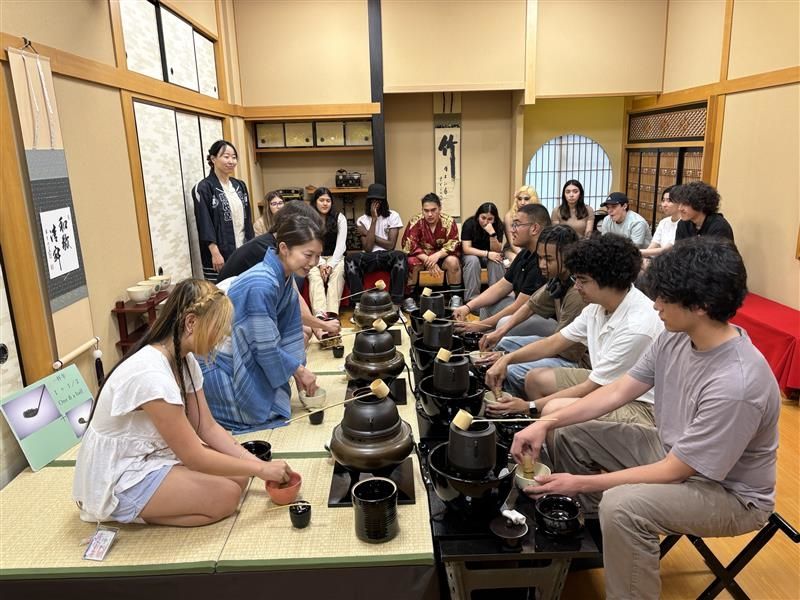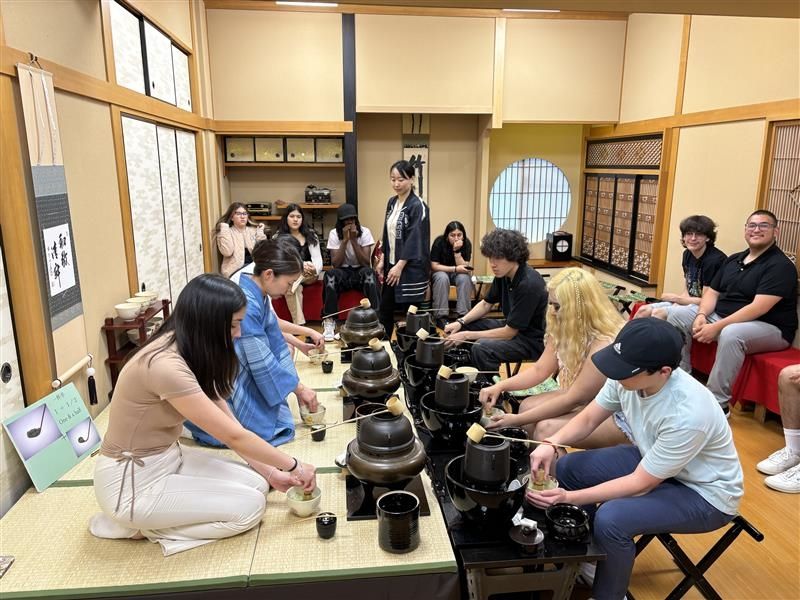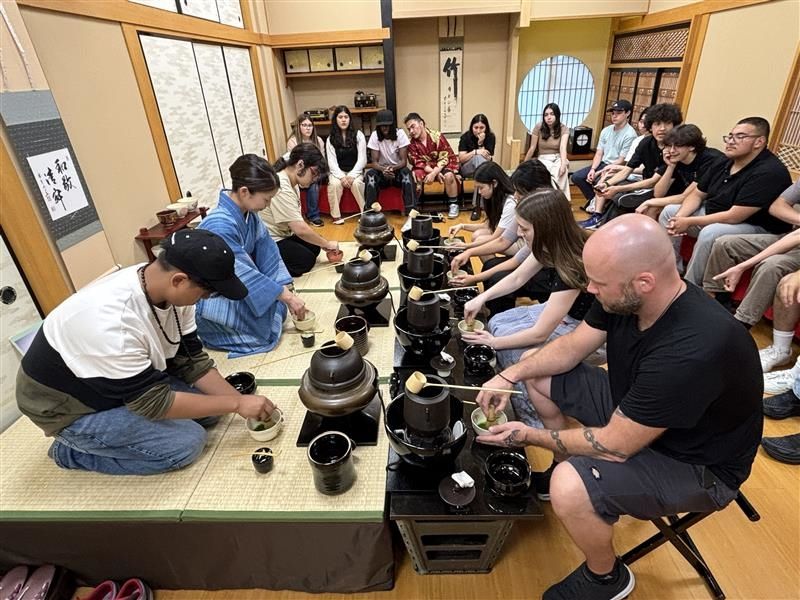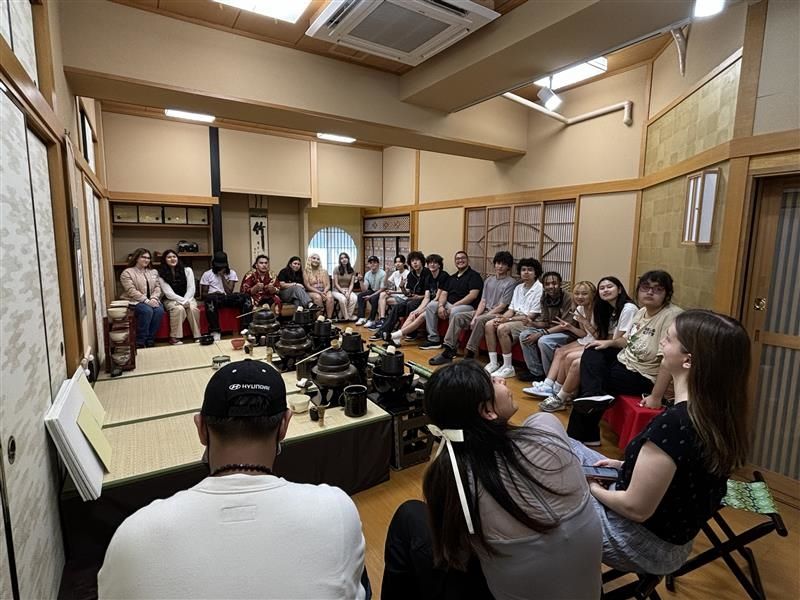Traditional Japanese Culture: The Tea Ceremony
This week, students got the opportunity to attend a traditional Japanese tea ceremony! Since I am a PL for group 4, this post (and the photos) will mainly showcase students from Group 4.
The Japanese Tea Ceremony is a traditional culture practice in which tea is prepare and served in a ritualistic and ceremonial way. The tea ceremony originates from the 16th century and serves many different purposes. One of the main goals of the tea ceremony is to foster a bond between the host and guest during the ceremony. The host serves 和菓子 (わがし or wagashi), a traditional Japanese sweet, and makes 抹茶 (まっちゃ), or Matcha (green tea) for the guests.
The students not only learned about the cultural customs and history behind the tea ceremony, but also got participate as well. They ate a matcha flavored wagashi (pictured above) and had the opportunity to make their own matcha from scratch! To make the matcha, students scooped the matcha powder into a bowl, added some hot water, and whisked it until it bubbled up.
The students enjoyed being able to get a glimpse into traditional Japanese culture and values. At the end, the host told the students about the concept of 一期一会 (いちごいちえ or ichigoichie), or “once in a lifetime encounter/meeting.” This encapsulates the importance of appreciating every moment we have, as they will only happen once in our lifetimes.
I hope students will continue to have these once in a lifetime encounters throughout their journey here in Tokyo!
Related Posts
How I Made $2,000 Referring Other Students on Summer Abroad Programs
Read this blog from one of our past Global Ambassadors and find out how she was able to earn rewards with CIEE and encourage other students to study abroad!
Host Family Weekend
On the final weekend in Japan, students spent time with their host family. This weekend, host families prepared activities for students. Some students learned how to make Japanese food from... keep reading
Discovering Aizome- Japanese Indigo Dyeing
Tokyo Language and Culture students experienced a lesson in traditional Japanese indigo dyeing at Some no Sato, a dyeing shop that was established over 100 years ago in Ochiai, Shinjuku... keep reading







